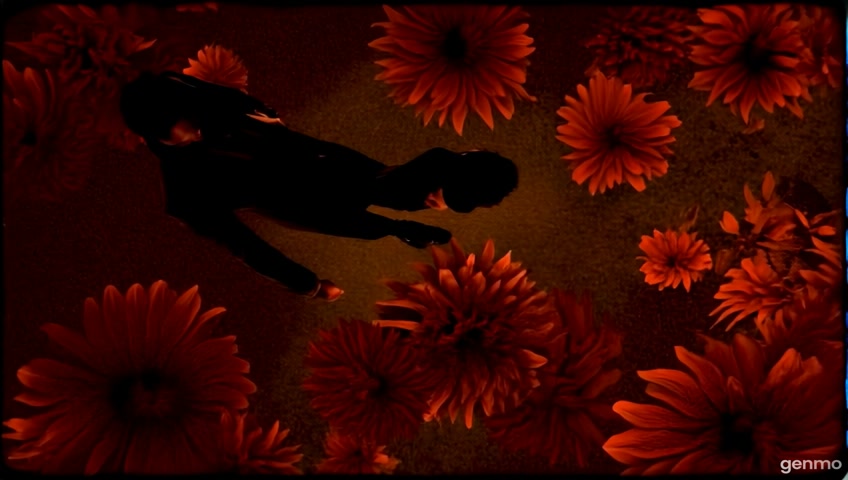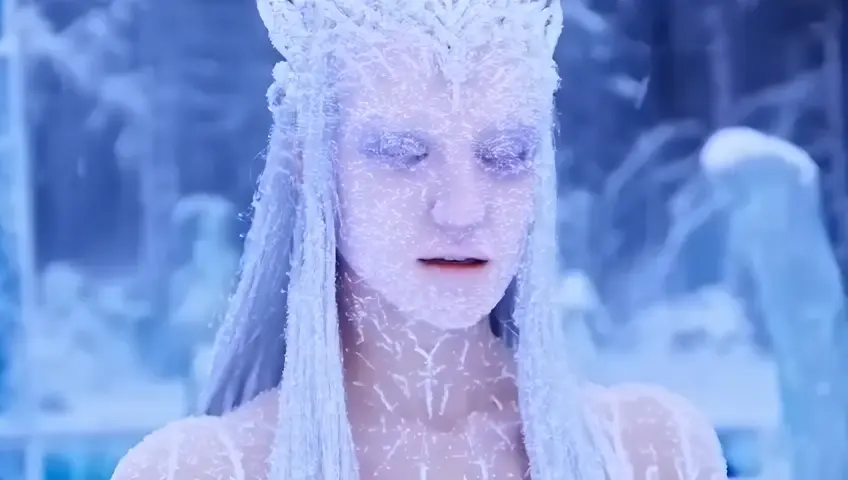
Dancing, almost bird's-eye view of a surreal landscape. A field of deep crimson and orange flowers dominates the foreground, their petals sharply defined against an austere, almost black background. The color palette is intensely saturated, creating a dramatic contrast. The central figure is a woman, rendered in deep shadow, bathed in a dark light that reveals only the contours of her body. Her posture, though obscured, suggests a pensive, possibly melancholic pose. The chiaroscuro effect dramatically enhances her figure, leaving much room for the imagination. Behind her, and partially obscured by the flowers, is a man in an elegant dark suit. The backlight silhouettes his figure, but the reflection and multiplication of his form, reminiscent of the work of M.C. Escher, are subtly intertwined in the field of flowers. These multiplying reflections are not perfectly sharp; They retain a slightly blurred, almost ghostly quality, as if dissolving into the flowers. The effect suggests both repetition and the fragmentation of identity. The artistic style combines elements of Art Brut and Brutalism. The sharp, angular shapes of the flowers, almost geometric in structure, evoke the influence of Brutalism, while the slightly uncontrolled expressiveness of the woman's pose and the imperfect reflections of the man evoke the raw emotionality of Art Brut. However, the precise lines and reflections also pay homage to Escher's mastery of perspective and impossible spaces, and the man's suit evokes the purity and functionality of lines associated with Gropius and the Bauhaus movement. The subtle film grain and meticulous shading add texture and depth to the scene, giving it a slightly vintage, almost dreamlike feel. The overall effect is both mysterious and seductive, evoking a sense of unease and wonder. The stark contrasts and emotionally charged images invite the viewer to contemplate the relationship between the shadowy woman, the multiplying man, and the vibrant yet unsettling floral landscape.





































